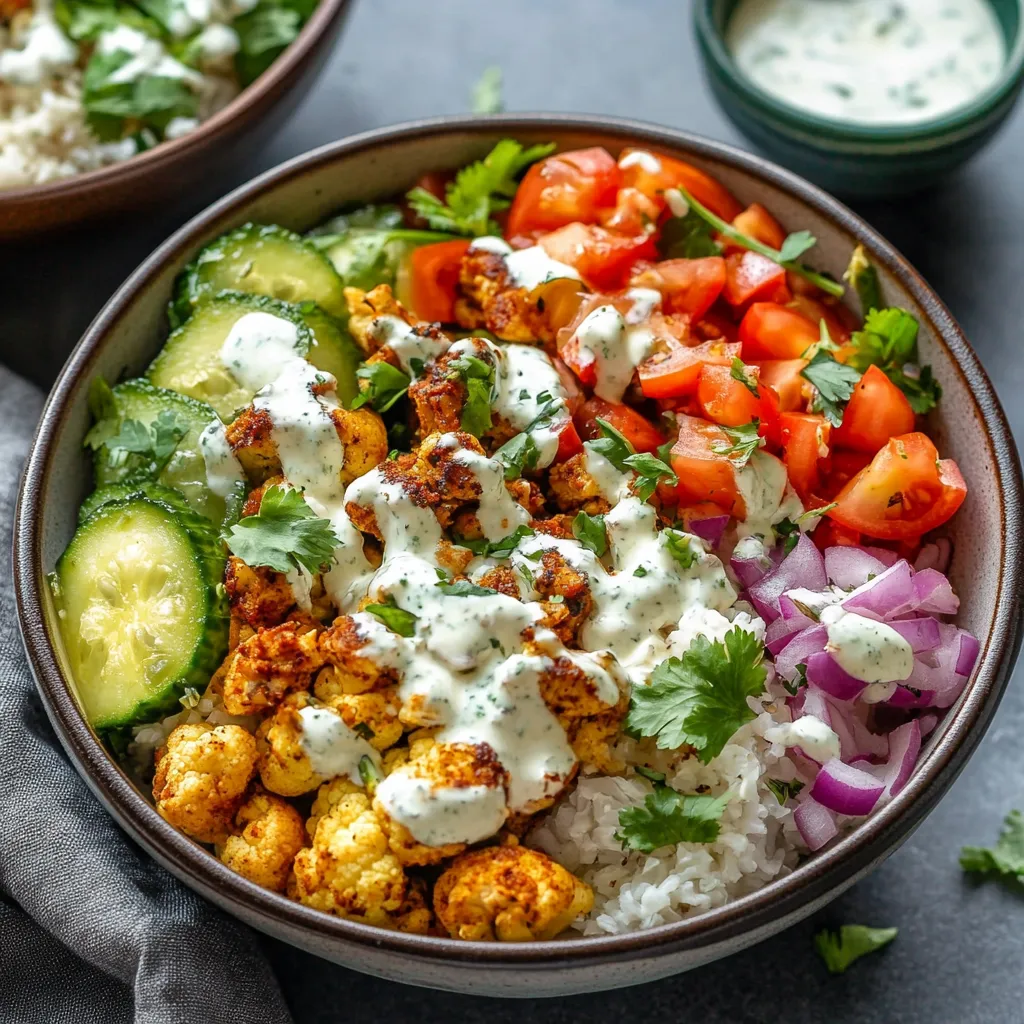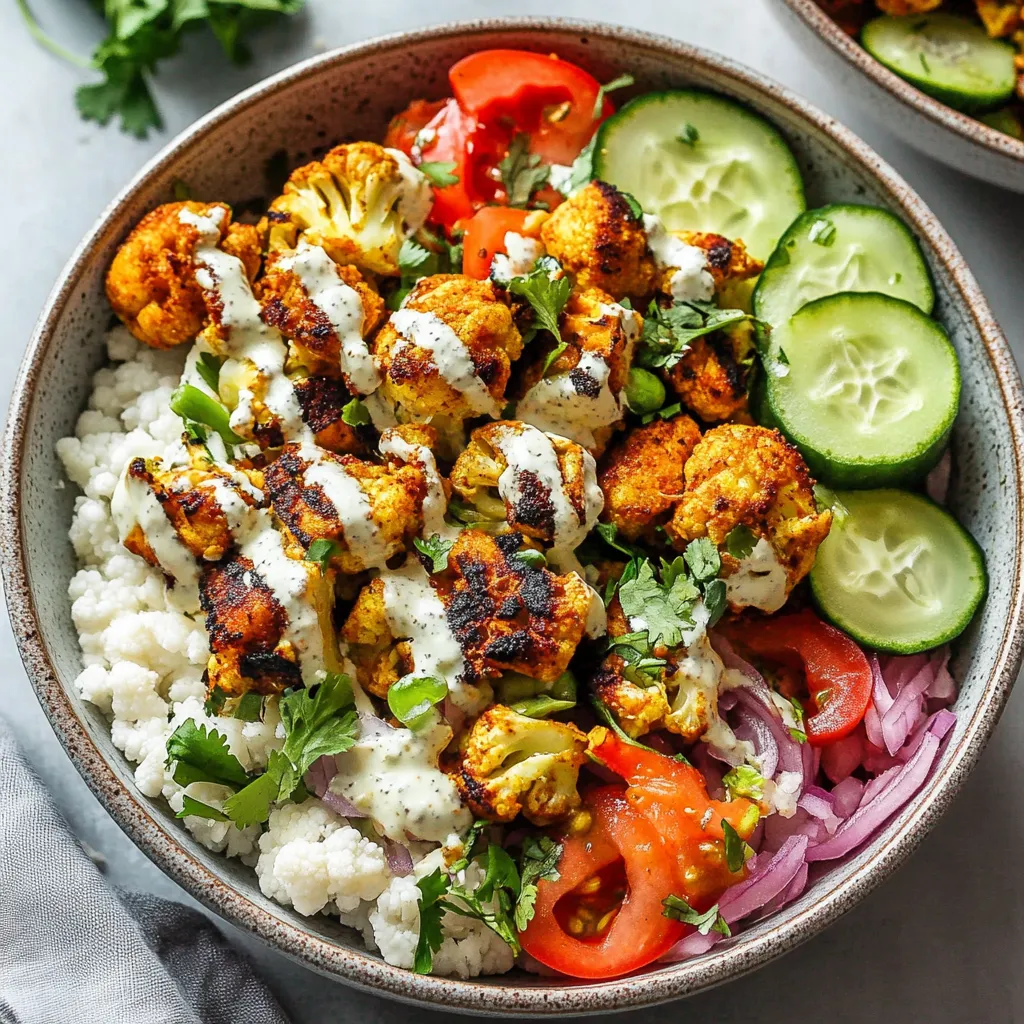 Pin
Pin
The beauty of Middle Eastern cuisine lies in its ability to transform simple ingredients into something extraordinary. These Cauliflower Shawarma Bowls do exactly that, taking humble cauliflower and elevating it with aromatic spices and a silky tahini sauce. After perfecting this recipe through many iterations, I've found that the magic lies in getting the cauliflower perfectly caramelized while keeping the chickpeas irresistibly crispy.
Last week, I served these bowls to friends who typically shy away from vegetarian meals. They were amazed by how satisfying and flavorful they were. The secret? Taking time to properly roast the cauliflower until it develops golden-brown edges.
Essential Ingredients and Their Role
- Cauliflower: Creates a meaty texture when roasted properly
- Chickpeas: Provide protein and satisfying crunch
- Curry powder: Adds warmth and depth to the spice blend
- Fresh herbs: Brighten the tahini sauce
- Tahini: Creates a creamy sauce that ties everything together
Detailed Cooking Instructions
- Perfect Roasting Technique
- Cut cauliflower florets uniformly for even cooking. Space ingredients well on the baking sheet. Rotate pan halfway through roasting. Look for dark golden edges on the cauliflower.
- Mastering the Sauce
- Use room temperature tahini to prevent seizing. Add water gradually while blending. Taste and adjust seasoning frequently. Keep extra water handy for thinning.
- Assembly Strategy
- Start with warm rice for temperature contrast. Layer components thoughtfully for visual appeal. Add fresh elements last. Drizzle sauce just before serving.
Through experimentation, I discovered that letting the roasted elements cool slightly before assembly actually intensifies their flavors while preventing the fresh components from wilting.

These Cauliflower Shawarma Bowls represent the perfect balance of healthy and satisfying. The way the spiced cauliflower caramelizes, while the chickpeas provide crunch and the tahini sauce adds richness, creates a bowl that's both nourishing and crave-worthy.
Creating the Perfect Bowl Experience
Success with these bowls comes down to thoughtful assembly:
Layer ingredients from heartiest to most delicate
Create color contrast for visual appeal
Keep sauces and dressings on the side for meal prep
Consider temperature variations for interest
Troubleshooting Common Issues
From my test kitchen experiences, here are solutions:
If cauliflower steams instead of roasts: Use a larger pan or cook in batches
If chickpeas aren't crispy: Dry them more thoroughly and give them space
If tahini sauce is bitter: Add more lemon juice and a touch of honey
If rice is sticky: Rinse well before cooking and fluff with a fork

Seasonal Adaptations
The basic recipe welcomes seasonal touches:
Spring: Add roasted asparagus and fresh peas
Summer: Include grilled zucchini and fresh herbs
Fall: Mix in roasted butternut squash
Winter: Add roasted root vegetables
Making it Meal-Prep Friendly
Keep components fresh throughout the week:
Store roasted elements separately from fresh
Pack sauce in small containers
Prep extra vegetables for quick assembly
Keep fresh herbs in water like flowers

The beauty of these Cauliflower Shawarma Bowls lies in their versatility and wholesome ingredients. Whether you're looking for a satisfying plant-based meal or simply want to incorporate more vegetables into your diet, these bowls deliver both nutrition and flavor in every bite.
Remember, great vegetarian cooking is about building layers of flavor and creating interesting textures. From the caramelized cauliflower to the crispy chickpeas and creamy tahini sauce, each component plays its part in creating a memorable meal that satisfies both body and soul.
This recipe proves that healthy eating doesn't mean sacrificing flavor or satisfaction. The combination of warm spices, roasted vegetables, and creamy sauce creates a bowl that's as nourishing as it is delicious, making it a perfect addition to your regular meal rotation.
Recipe FAQs
- → Can I meal prep these bowls?
- Yes, all components can be stored separately in the fridge for up to 3 days.
- → What can I substitute for rice?
- You can use quinoa, couscous, or any grain of your choice.
- → Is this recipe gluten-free?
- Yes, it's naturally gluten-free when made as directed.
- → Can I make the tahini sauce less thick?
- Yes, simply add more warm water until you reach desired consistency.
- → How do I store leftovers?
- Store components separately in airtight containers for up to 3 days.
